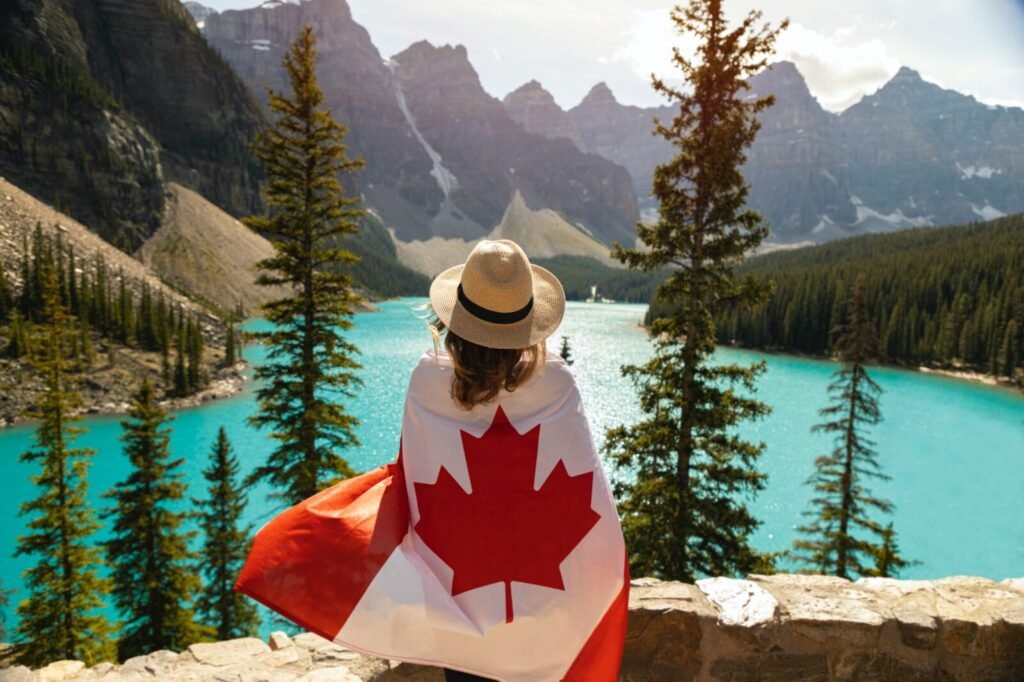Stepping into Canada is like opening a new chapter filled with opportunities, adventures, and challenges. Whether you’re a new immigrant learning your way around, a global traveler exploring the Great White North, or a Canadian citizen rediscovering your homeland, daily life in Canada has its quirks that make it both unique and rewarding.
From understanding the weather to navigating daily work routines, we’ll walk you through what life in Canada looks like and offer practical tips for thriving in this vast, diverse country.
Understanding Canadian Weather
When you think about Canada, snow might be the first thing that comes to mind. While winter is a big part of Canadian life, the country experiences four distinct seasons, and each comes with its own set of activities and lifestyle adjustments.
The Four Seasons at a Glance
| Season | Months | Typical Weather | Activities |
|---|---|---|---|
| Winter | December – March | Cold, snowy, temperatures drop to -30°C (-22°F) in some areas | Skiing, snowboarding, ice skating, cozying up by the fire |
| Spring | April – June | Milder temperatures, blooming flowers | Hiking, enjoying cherry blossoms, spring festivals |
| Summer | July – August | Warm, up to 35°C (95°F) in regions | Camping, swimming, attending music festivals |
| Fall | September – November | Cool, crisp air, stunning foliage | Pumpkin picking, Thanksgiving celebrations, leaf tours |
Tips for adjusting to Canadian weather:
- Invest in winter gear, including a warm coat, gloves, and insulated boots.
- Layer your clothing for spring and fall.
- Always carry sunscreen during summer activities.
Table of Contents
Navigating Daily Work Routines
Canada takes pride in its work-life balance, and most offices operate from 9 AM to 5 PM, Monday through Friday. Flexible work arrangements, including hybrid or remote setups, are becoming increasingly common.
Key highlights of the Canadian workplace:
- Punctuality counts: Arriving on time for work and meetings is expected.
- Lunch breaks are sacred: A typical work lunch lasts 30 minutes to an hour, with many people opting for coffee shops or outdoor spaces during summer.
- Paid time off: Most Canadians enjoy paid holidays, with statutory holidays such as New Year’s Day, Canada Day, and Thanksgiving being widely observed.
Pro tip: If you’re a new immigrant, develop your soft skills such as teamwork and communication. Canadians value respect, collaboration, and open dialogue in workplaces.
Transportation in Canada
While Canada is the second-largest country in the world by land area, its efficient transportation system ensures seamless travel for daily commutes and long-distance adventures.
Public transport is widely available in major cities like Toronto, Vancouver, and Montreal. Services include buses, subways, and streetcars. Smaller towns may rely more on limited bus routes or personal vehicles.
Common Transportation Options
| Mode | When to Use |
| Cost Example (approx.) |
| Subway or Bus | For city commutes, eco-friendly | $100/month for a citywide pass |
| Taxi or Rideshare | For short distances or urgent trips | $10-$25 per ride |
| Car | For small towns or rural regions | Car ownership costs vary by region |
| Biking | Popular in urban areas during summer | Minimal, cost of bike upkeep |
If you’re gung-ho about road trips, take advantage of Canada’s scenic driving routes like the Cabot Trail in Nova Scotia or the Icefields Parkway in Alberta.

Canadian Cuisine and Grocery Shopping
Foodies, rejoice! Canadian cuisine offers something for everyone, blending indigenous recipes, French culture, and global influences.
Famous dishes to try include poutine (fries topped with cheese curds and gravy), butter tarts, Nanaimo bars, and, of course, maple syrup on just about anything. For those with adventurous tastebuds, exploring local farmers’ markets often reveals diverse culinary gems.
Grocery Shopping Tips
- Grocery store chains like Loblaws, Sobeys, and Walmart are popular across the country.
- Look for deals in flyers or apps like “Flipp” to save on essentials.
- Ethnic grocery stores in cities provide access to international ingredients.
Healthcare in Canada
Canada’s healthcare system operates on a publicly funded model, meaning most medical services are free for residents with a provincial health card. However, prescription medication and dental care might not always be covered unless you have additional insurance.
Steps to Access Healthcare as a Newcomer
- Apply for a Health Card: Each province has its own healthcare plan. Make sure to register upon arrival.
- Choose a Family Doctor: Having a primary care physician makes accessing non-emergency medical services easier.
- Know Walk-In Clinics: For minor but urgent ailments, walk-in clinics are a convenient option without the need for appointments.
Building a Community
Canada is one of the most multicultural countries in the world, so fitting in isn’t a problem. However, it helps to join local meetups, volunteer groups, or hobby clubs to expand your social circle. Proactive participation in festivals and cultural events, like Diwali in Brampton or the Calgary Stampede, offers a great sense of belonging.
Pro tip: Explore Facebook groups or apps like Meetup to find communities that align with your interests or professional background.
FAQs about Daily Life in Canada
Q1. Is Canada expensive to live in?
It depends on the region and lifestyle. Cities like Toronto and Vancouver are pricier, while smaller towns and rural areas are more affordable. On average, housing is the largest expense.
Q2. Do I need a car in Canada?
Not necessarily. Public transportation is excellent in city hubs, but owning a car is recommended if you live in suburban or rural areas.
Q3. What languages are commonly spoken in Canada?
English and French are the official languages, with French being predominant in Quebec. However, several cities boast vibrant multicultural communities where you’ll hear languages like Mandarin, Punjabi, and Spanish.
Q4. What’s the best way to dress for Canadian weather?
Layering is key, especially during transitional seasons. A quality winter coat and thermals are must-haves for winter, while breathable fabrics work best for summer.
Make the Most of Life in Canada
Canada’s diverse culture, stunning landscapes, and dynamic workplaces make it an ideal destination for immigrants, travelers, and long-term residents alike. Whether it’s adjusting to the snow or trying maple syrup for the first time, every experience adds another layer to this fulfilling Canadian adventure.
For more insights and tips about living in Canada, subscribe to our newsletter and stay ahead of every opportunity this beautiful country has to offer!



6 Comments
Pingback: Scholarships in Canada Guide for Students
Pingback: PhD Scholarships in Canada 2025 - Complete Guide
Pingback: Weekly Food Basics Flyer: Save Big in Canada
Pingback: Emerging Trends in Health Insurance for Canadians
Pingback: Why Live in Canada? Discover the Benefits of Life in the True North
Pingback: Canada News: Understand Key Trends and Where to Find Them